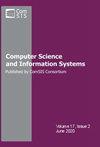基于k-均值聚类算法的智能电网智能城市电力需求预测
IF 1.2
4区 计算机科学
Q4 COMPUTER SCIENCE, INFORMATION SYSTEMS
引用次数: 0
摘要
本工作旨在通过大数据对从事智慧城市建设的各部门进行统一管理,建立综合数据采集和共享体系,为各领域的智慧应用提供快速便捷的大数据服务。提出了一种基于反向传播神经网络(BPNN)的中国电力需求预测模型。美国电力行业根据智慧城市?S大数据特点。该模型集成了气象、地理、人口、企业和经济信息,形成了一个大的智能数据库。此外,K-means聚类算法挖掘和分析数据,以优化电力消费者?信息。利用bp神经网络模型提取特征进行预测。K-means聚类算法得到的日相关性较弱的用户,只将相邻时刻的历史负荷输入到BPNN模型中进行预测。最后,通过深入挖掘数据相关性对电力市场进行评估,以验证所提出的模型。年代的有效性。结果表明,K-mean算法可以显著提高电力消费者的分割精度,最大准确率为85.25%,平均准确率为83.72%。将不同区域的用电量分开,对用电量进行分类。该电力需求预测模型可以提高预测精度,平均错误率为3.27%。这个模型吗?加入动量因子后,S训练速度显著提高,平均错误率为2.13%。因此,电力需求预测模型具有较高的准确率和训练效率。研究结果可为电力需求预测、个性化营销和电力行业发展规划提供理论和实践依据。本文章由计算机程序翻译,如有差异,请以英文原文为准。
Predicting smart cities' electricity demands using k-means clustering algorithm in smart grid
This work aims to perform the unified management of various departments engaged in smart city construction by big data, establish a synthetic data collection and sharing system, and provide fast and convenient big data services for smart applications in various fields. A new electricity demand prediction model based on back propagation neural network (BPNN) is proposed for China?s electricity industry according to the smart city?s big data characteristics. This model integrates meteorological, geographic, demographic, corporate, and economic information to form a big intelligent database. Moreover, the K-means clustering algorithm mines and analyzes the data to optimize the power consumers? information. The BPNN model is used to extract features for prediction. Users with weak daily correlation obtained by the K-means clustering algorithm only input the historical load of adjacent moments into the BPNN model for prediction. Finally, the electricity market is evaluated by exploring the data correlation in-depth to verify the proposed model?s effectiveness. The results indicate that the K-mean algorithm can significantly improve the segmentation accuracy of power consumers, with a maximum accuracy of 85.25% and average accuracy of 83.72%. The electricity consumption of different regions is separated, and the electricity consumption is classified. The electricity demand prediction model can enhance prediction accuracy, with an average error rate of 3.27%. The model?s training significantly speeds up by adding the momentum factor, and the average error rate is 2.13%. Therefore, the electricity demand prediction model achieves high accuracy and training efficiency. The findings can provide a theoretical and practical foundation for electricity demand prediction, personalized marketing, and the development planning of the power industry.
求助全文
通过发布文献求助,成功后即可免费获取论文全文。
去求助
来源期刊

Computer Science and Information Systems
COMPUTER SCIENCE, INFORMATION SYSTEMS-COMPUTER SCIENCE, SOFTWARE ENGINEERING
CiteScore
2.30
自引率
21.40%
发文量
76
审稿时长
7.5 months
期刊介绍:
About the journal
Home page
Contact information
Aims and scope
Indexing information
Editorial policies
ComSIS consortium
Journal boards
Managing board
For authors
Information for contributors
Paper submission
Article submission through OJS
Copyright transfer form
Download section
For readers
Forthcoming articles
Current issue
Archive
Subscription
For reviewers
View and review submissions
News
Journal''s Facebook page
Call for special issue
New issue notification
Aims and scope
Computer Science and Information Systems (ComSIS) is an international refereed journal, published in Serbia. The objective of ComSIS is to communicate important research and development results in the areas of computer science, software engineering, and information systems.
 求助内容:
求助内容: 应助结果提醒方式:
应助结果提醒方式:


